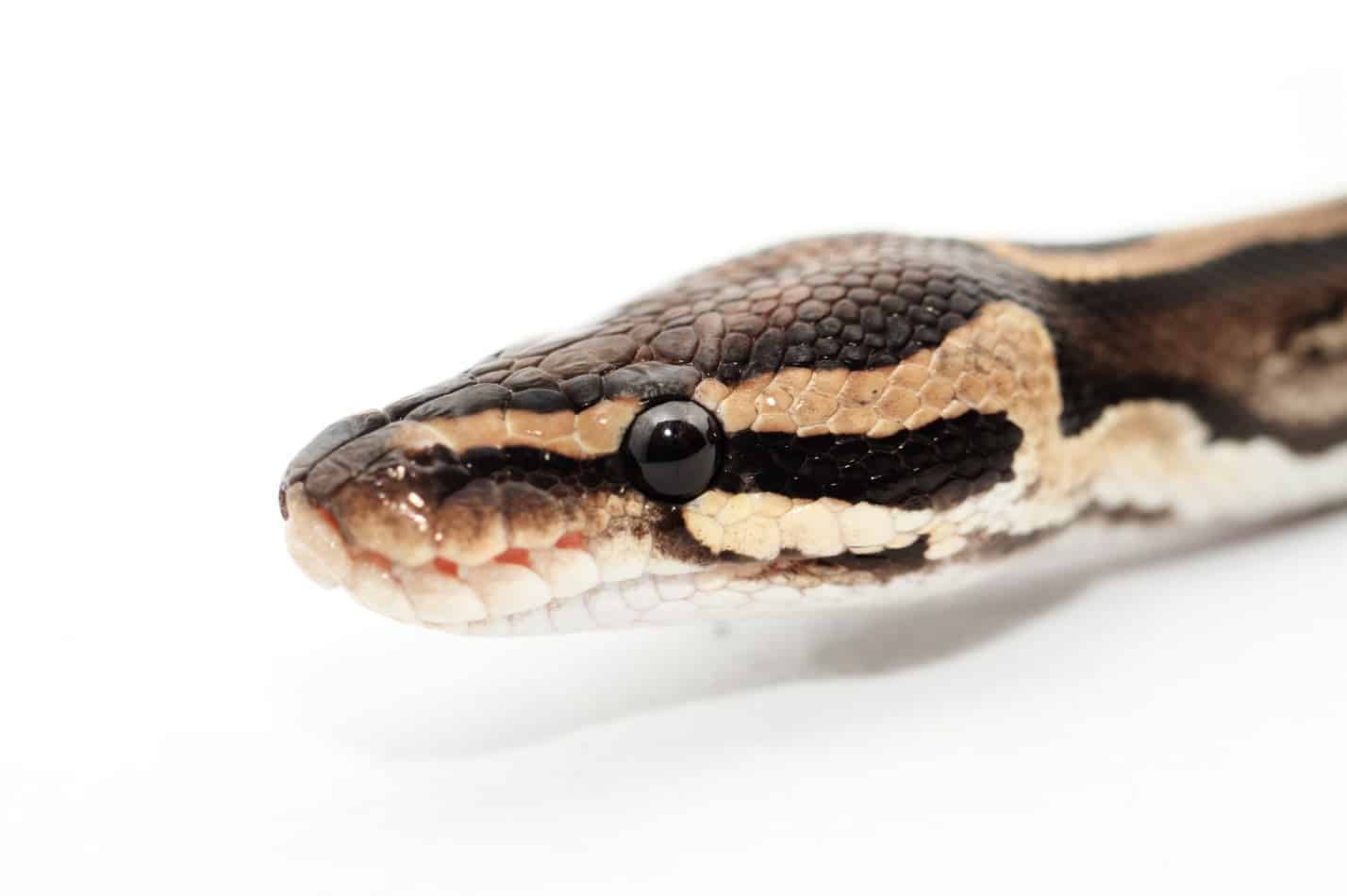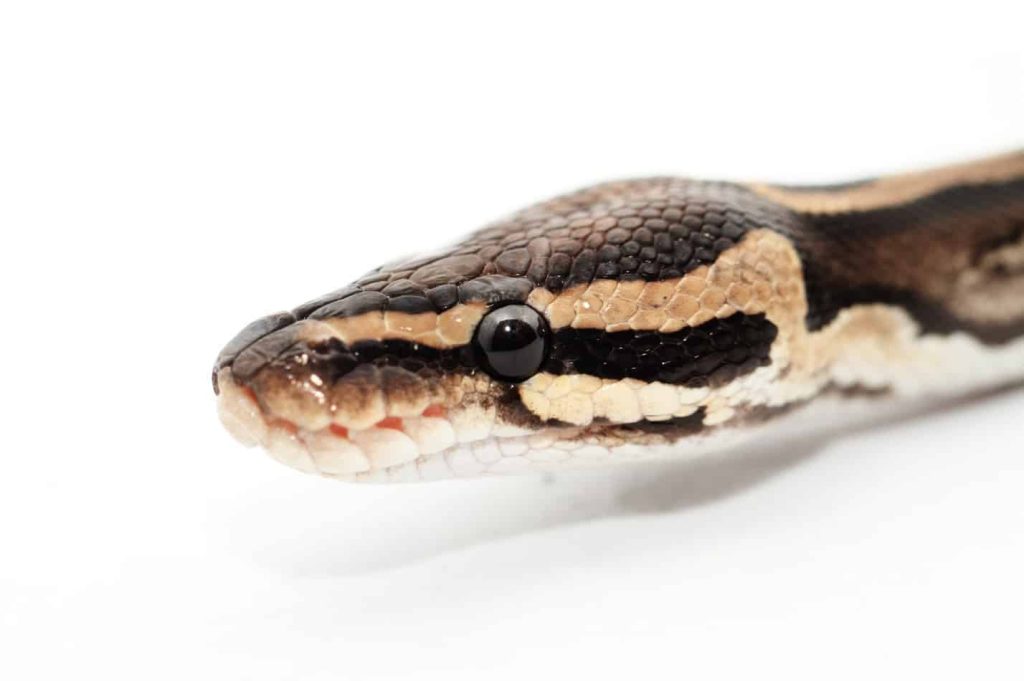Ball pythons are fascinating creatures that have been kept as pets for decades. One of the most common questions that pet owners ask is whether ball pythons can hear. This is an important question to answer, as it can help pet owners understand their pet’s behavior and communication abilities better.
While ball pythons do not have external ears like humans, they do have internal ears that allow them to sense vibrations and low-frequency sounds. In this article, we will explore the anatomy of a ball python’s ear and how it functions, as well as discuss the ways in which ball pythons communicate with each other and with their human caretakers. So, let’s dive in and discover if ball pythons can hear!
Yes, ball pythons can hear. They have an inner ear with a functional cochlea, which enables them to perceive sounds. However, their hearing is not as sensitive as that of humans and other animals. They can detect low-frequency sounds and vibrations, but high-frequency sounds are beyond their hearing range.

Can Ball Pythons Hear?
Ball pythons are popular snakes that are kept as pets due to their docile nature and their unique patterns and colors. However, one question that many people have when it comes to these magnificent creatures is whether or not they can hear. In this article, we’ll explore the answer to this question and provide you with all the information you need to know about ball pythons and their hearing abilities.
What is the Anatomy of a Ball Python’s Ear?
The anatomy of a ball python’s ear is similar to that of most snakes. They have an inner ear, a middle ear, and an outer ear. However, unlike humans and other mammals, ball pythons do not have an eardrum or external ear opening. Instead, they have a small opening on each side of their head, known as the tympanic membrane, which is located just behind their eyes.
The middle ear of ball pythons contains two small bones known as the stapes and the columella. These bones allow them to transmit vibrations through their skull and into their inner ear. The inner ear of ball pythons contains the cochlea, which is responsible for converting these vibrations into electrical signals that the brain can interpret.
Can Ball Pythons Hear?
While ball pythons do not have ears in the traditional sense, they do have the ability to sense vibrations and low-frequency sound waves. This is because their tympanic membranes are connected to their inner ear, allowing them to pick up on vibrations in their environment.
However, ball pythons are not able to hear high-frequency sounds like humans or other mammals can. This is because their cochlea is not designed to pick up on these types of sounds. Instead, they rely on their other senses, such as their sense of smell and their ability to detect heat, to navigate their environment and find prey.
How Do Ball Pythons Sense Vibrations?
Ball pythons sense vibrations through a process known as bone conduction. When a sound wave or vibration enters their body, it is transmitted through their skull and into their inner ear. This allows them to detect the source of the sound and determine whether it is a potential threat or prey item.
In addition to their ability to sense vibrations, ball pythons also use their bodies to feel vibrations in their environment. They have specialized sensory pits on their face, known as pit organs, which allow them to detect heat and vibrations in their surroundings.
Benefits of a Ball Python’s Hearing Abilities
While ball pythons may not be able to hear high-frequency sounds like humans or other animals, their ability to sense vibrations is still an important part of their survival. It allows them to detect potential predators and prey in their environment and helps them navigate their surroundings.
As pets, ball pythons can also benefit from their hearing abilities. For example, they may be able to detect the vibrations of their owner’s footsteps or voice, which can help them feel more comfortable and secure in their environment.
Ball Pythons Vs Other Snakes: Hearing Abilities
Compared to other snakes, ball pythons have relatively poor hearing abilities. While they are able to sense vibrations and low-frequency sounds, they are not able to hear high-frequency sounds like some other species of snakes.
For example, some species of snakes are able to detect and respond to the calls of their prey, while others are able to hear the ultrasonic sounds of bats and other predators. However, ball pythons rely more heavily on their other senses, such as their sense of smell and their ability to detect heat, to navigate their environment and find prey.
Conclusion
In conclusion, while ball pythons may not have ears in the traditional sense, they do have the ability to sense vibrations and low-frequency sounds through their inner ear and tympanic membrane. This allows them to detect potential threats and prey in their environment and helps them navigate their surroundings.
As pets, ball pythons can benefit from their hearing abilities, as they can detect the vibrations of their owner’s footsteps and voice, which can help them feel more comfortable and secure in their environment. Overall, ball pythons are fascinating creatures with unique abilities that make them a popular choice for pet owners and snake enthusiasts alike.
Frequently Asked Questions
Can Ball Pythons Hear?
Yes, Ball Pythons have the ability to hear, but not in the same way humans do. They lack external ears, so they don’t hear sounds in the same way we do. However, they have an inner ear that can detect vibrations and low-frequency sounds.
The inner ear of Ball Pythons is sensitive to vibrations and can detect sounds between 50 and 1,000 Hz. This means they can hear low-frequency sounds, such as footsteps, rustling leaves, and the movement of prey. However, they are not able to hear high-pitched sounds, such as bird songs or the sound of a human voice.
How Do Ball Pythons Detect Sounds?
Ball Pythons use their lower jawbone and inner ear to detect sounds. When sound waves reach the snake’s body, they vibrate the lower jawbone, which is connected to the inner ear. The inner ear then picks up the vibrations and sends signals to the brain, allowing the snake to interpret the sound.
This is why Ball Pythons are often seen flicking their tongues in the air. They use their tongues to collect airborne particles, such as dust and scent molecules, which they then transfer to their Jacobson’s organ in the roof of their mouth. The Jacobson’s organ helps the snake to detect and interpret scents, which can also be used to locate prey.
Do Loud Noises Hurt Ball Pythons?
Ball Pythons are not known to be affected by loud noises in the same way humans and other animals are. They do not have sensitive eardrums or external ears that can be damaged by loud sounds. However, loud noises may startle or stress out the snake, which can cause them to hide or retreat to their hide box.
It’s important to note that Ball Pythons are sensitive to changes in their environment, and sudden loud noises can be stressful for them. If you need to make loud noises around your Ball Python, such as vacuuming or playing loud music, make sure to do so gradually and keep an eye on your snake’s behavior.
Can Ball Pythons Respond to Sound?
Ball Pythons can respond to sound in their own way, but they are not able to vocalize or make sounds themselves. They may respond to low-frequency sounds, such as the movement of prey or the sound of footsteps, by moving towards the source of the sound.
However, Ball Pythons rely more on their sense of smell and vision to locate prey and navigate their environment. They are not social animals and do not use sound to communicate with each other or with humans.
Can Playing Music Help Ball Pythons?
There is no evidence to suggest that playing music can have any specific benefits for Ball Pythons. While some people believe that playing calming or soothing music can help reduce stress in animals, there have been no studies to prove this theory.
In general, Ball Pythons prefer a quiet and peaceful environment. They may become stressed or agitated by loud or sudden noises, including music. If you choose to play music around your Ball Python, make sure to keep the volume low and monitor your snake’s behavior to ensure they are comfortable.
8 MORE Common Reptile Myths DEBUNKED!
In conclusion, research suggests that ball pythons can indeed hear, although their hearing capabilities may not be as advanced as other animals. While they lack outer ears, they are still able to detect sound vibrations through their jawbones and internal ear structures. This ability to hear may help them communicate with other snakes, locate prey, and avoid predators in their natural environment.
However, more studies are needed to fully understand the extent of their hearing abilities and how they process sound. It’s important to continue researching these fascinating creatures to gain a better understanding of their behavior and needs in captivity. As responsible pet owners, we should always strive to provide our ball pythons with a safe and comfortable environment that caters to their unique needs, including their hearing abilities.
Overall, whether or not ball pythons can hear is a fascinating topic that highlights the complexities of these amazing creatures. While we may never fully understand everything about them, we can continue to learn and appreciate the unique traits that make them so special.


